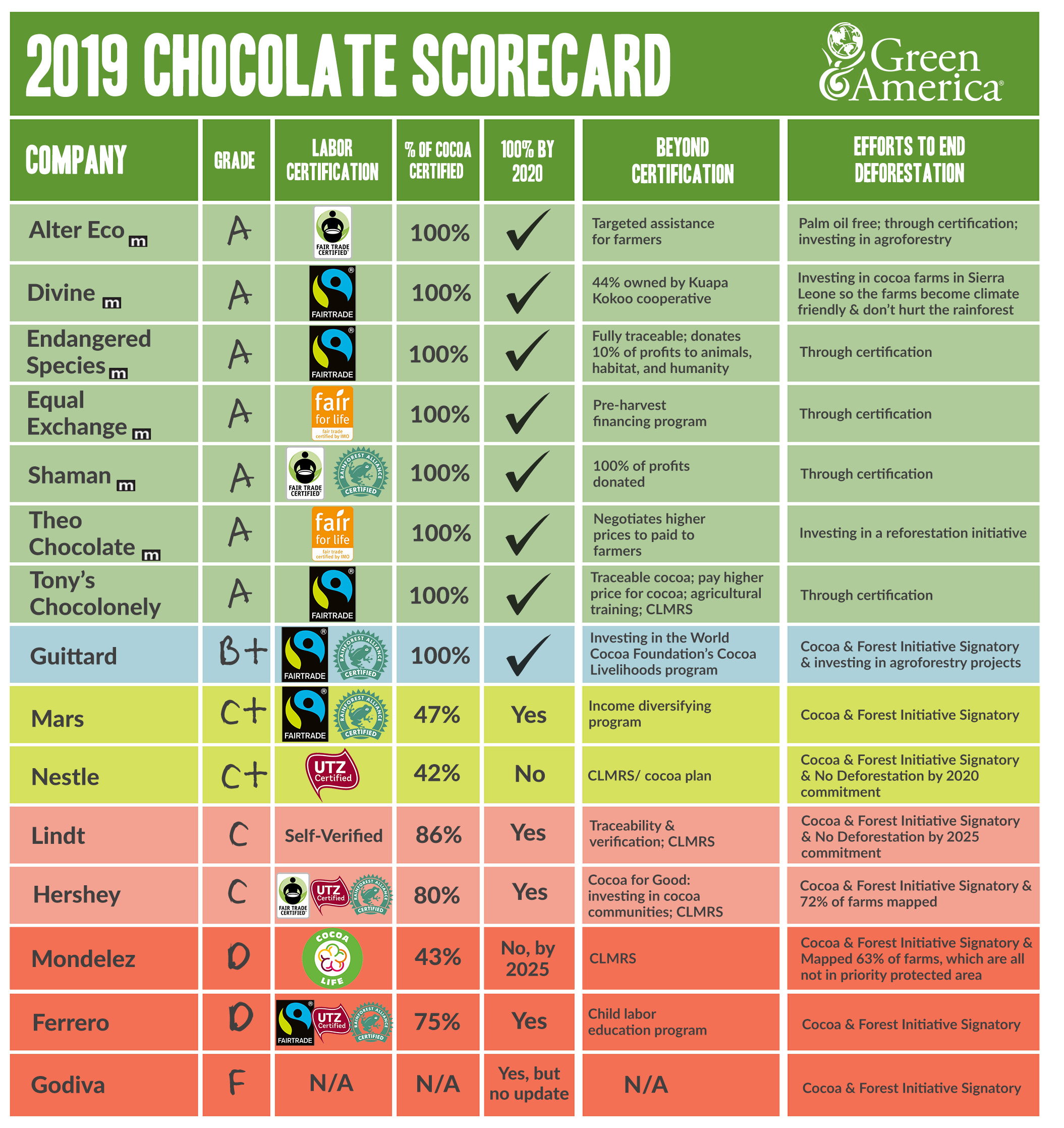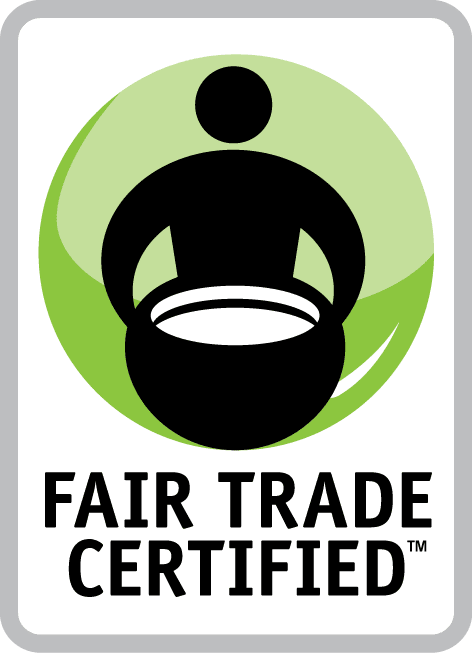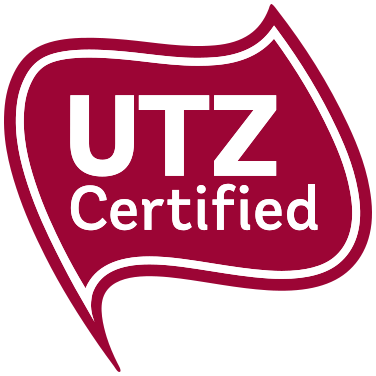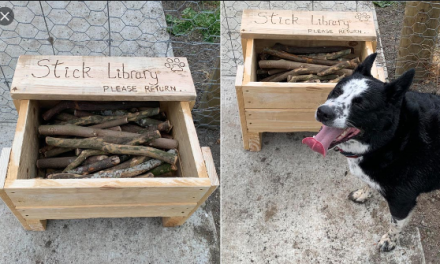According to the US Department of Labor, more than 2 million children in Ghana and Cote d’Ivoire work in hazardous conditions growing cocoa, the main ingredient in chocolate. While some companies have begun tracing their supply chains to prevent child labor, the vast majority of the 3 million tons of cocoa produced each year come from small farms in West Africa, where farmers and their children live on less than $1 per day.
This scorecard will help you find ethically sourced sweets and understand what the certification labels on cocoa actually mean. This is, of course, not a comprehensive list of ethically sourced chocolate companies; however, the scorecard features companies who are also Green Business Network members, as Green America has screened them for their environmental, social justice, and human rights practices. Chocolate bars with an “A” rating are addressing farmer income and child labor issues, and are organic and/or non-GMO certified.
RELATED STORY:
Most major chocolate companies have commitments to source more sustainable cocoa. In fact, many of them have plans to have 100% certified cocoa in their supply chain by 2020. Although this is an important step in the right direction, certification programs alone are not enough to solve the underlying issues that contribute to child labor in cocoa, including farmer poverty and a lack of infrastructure.
With that in mind, last year we expanded our chocolate scorecard to go beyond commitments about certified chocolate to look at programs that support farmers and address child labor when it is found. Additionally, while the scorecard’s ratings are still heavily based on efforts to combat child labor, this year we’ve added a new category on deforestation. On top of a child labor problem, the cocoa industry has a huge negative impact on forests. In the Ivory Coast and Ghana, 90% of their forests have been lost and the cocoa industry is a big driver of that deforestation. Much of that deforestation was caused by the largest cocoa companies, and, as a result of activist pressure, they worked with the World Cocoa Foundation to create the Cocoa and Forest Initiative to prevent further damage.
RELATED STORY:
With this updated scorecard, we are not only looking at how much certified cocoa a major chocolate company has, we are also looking to see if the company has innovative programs and projects in place to address some of the other underlying issues of child labor in cocoa and if the company is working to address deforestation. Although companies may have programs going beyond certification that sound similar, they can vary in practice in regards to how comprehensive and impactful they are, and the final grade reflects that.
Such programs include:
- Child Labor Monitoring and Remediation Systems, which work with communities and families to address why child labor is happening on farms;
- Farmer income generating programs;
- Traceability mechanisms for fuller supply chain transparency.
You can learn more about what went into the different grades here.

Click to here to download your own copy of Green America’s Chocolate Scorecard
 denotes members of Green America’s Green Business Network.
denotes members of Green America’s Green Business Network. 
*Green & Blacks is one of the pioneers of providing consumers with fair trade chocolate. While it continues to have some fair trade and organic offerings, it is also moving towards sourcing chocolate using Cocoa Life, the in-house certification scheme of its parent company, Mondelez. It appears that Green & Black’s sustainability commitments are tied to Mondelez’s overall sustainability commitments, which we feel is not as strong as some of its competitors.
**Godiva has committed to “100% sustainable cocoa by 2020,” but has not provided information about who is certifying its cocoa, nor shared any progress or plans regarding their commitment.
All figures come from publicly available company information and the Cocoa Barometer. This list is not exhaustive of all chocolate companies. If your favorite chocolate brand is not listed, consider calling the company to ask about its commitment to ethical sourcing.
RELATED STORY:
What The Certification Labels Mean
NOTE: In 2018, Rainforest Alliance and Utz merged. In 2019, Rainforest Alliance will release its new standards. Until then, Rainforest Alliance and Utz standards will continue to be applied.
*Article originally appeared at Organic Consumers Association. Reposted with permission.

















